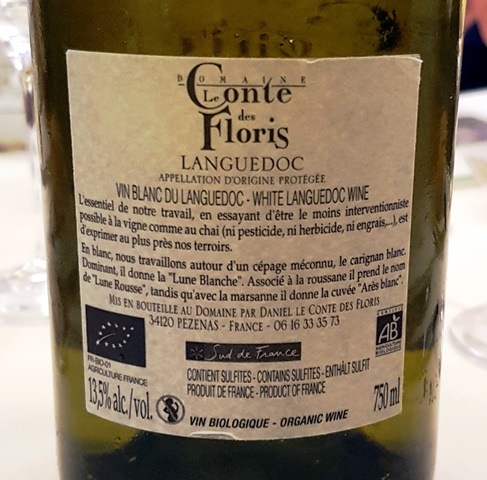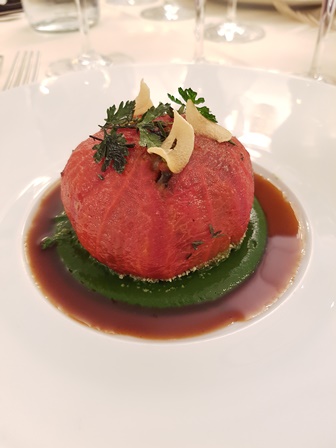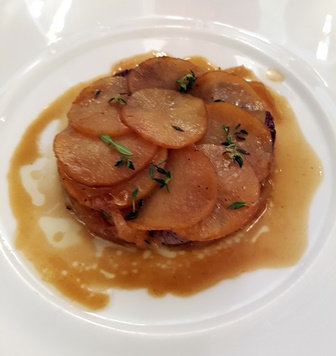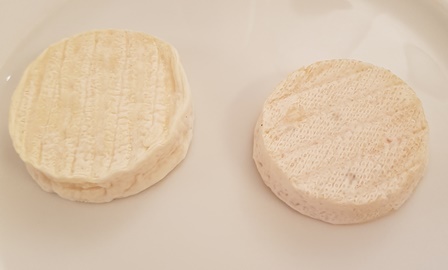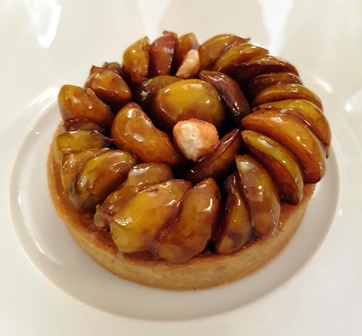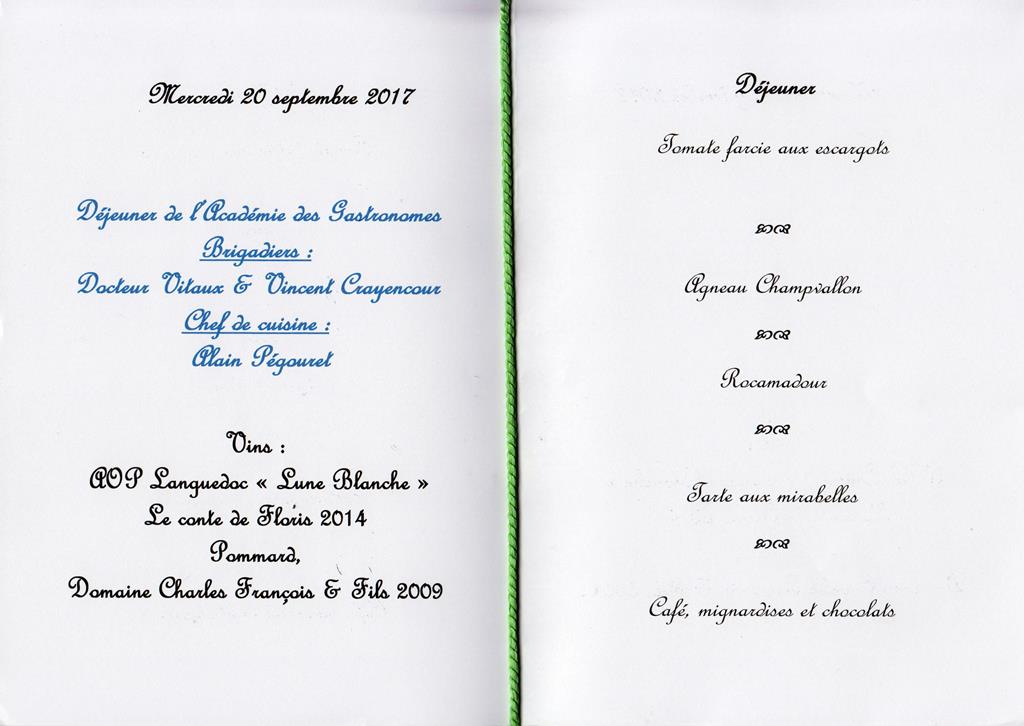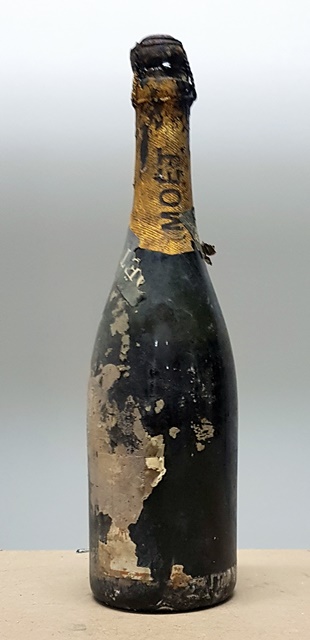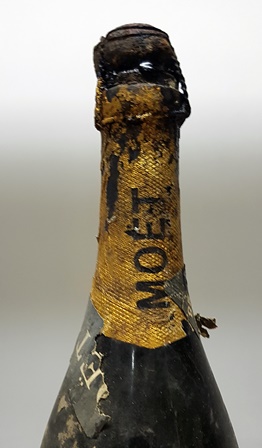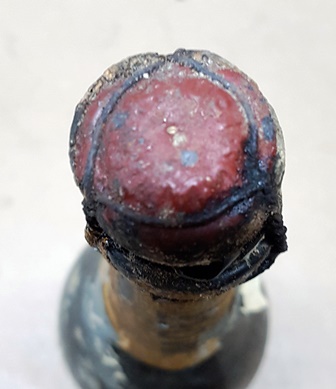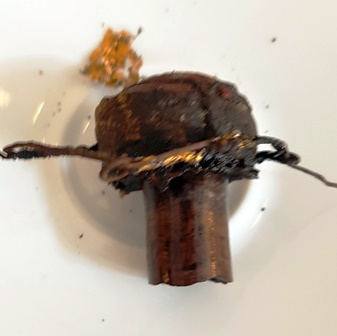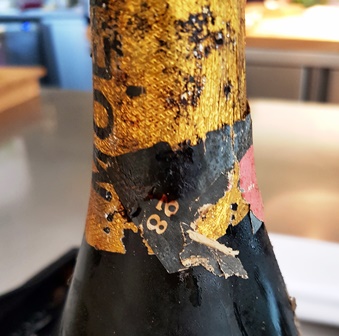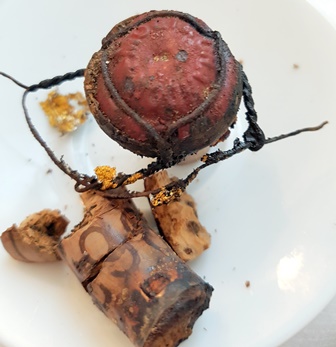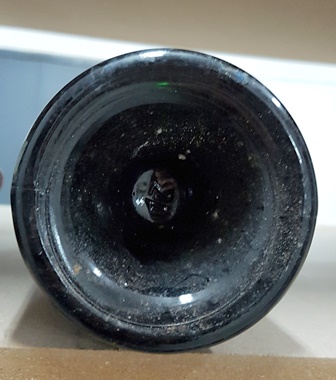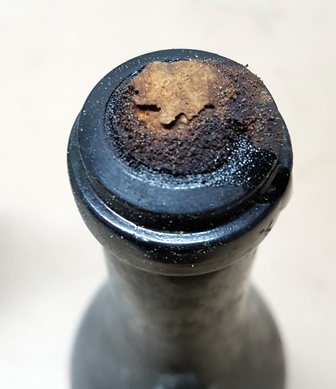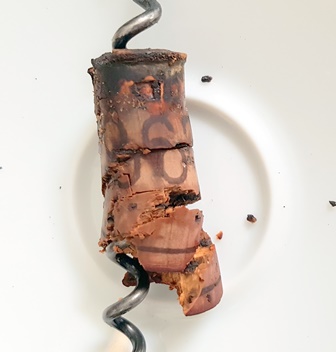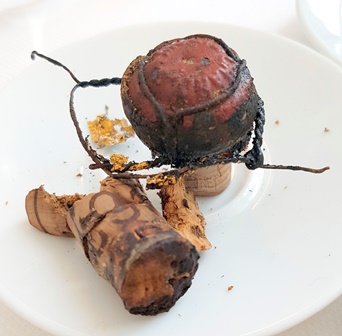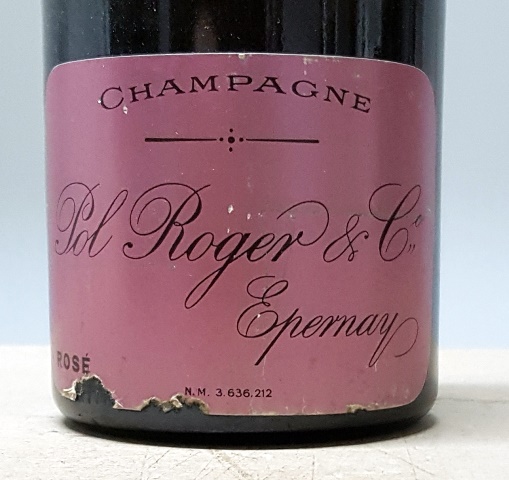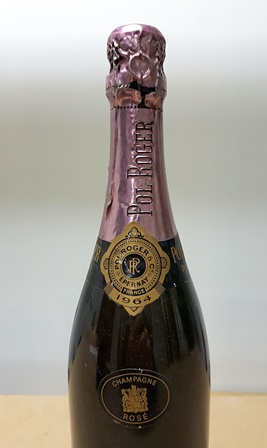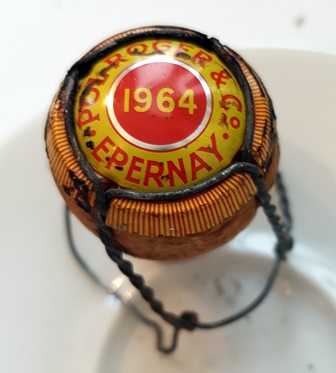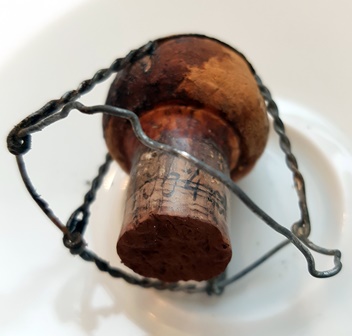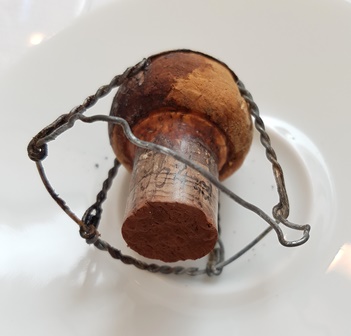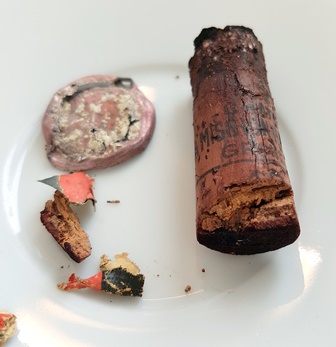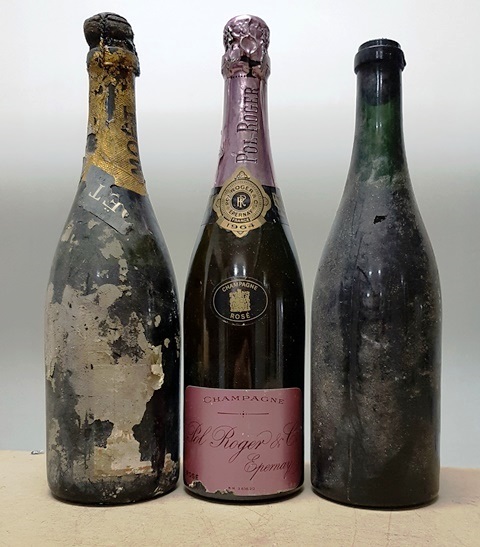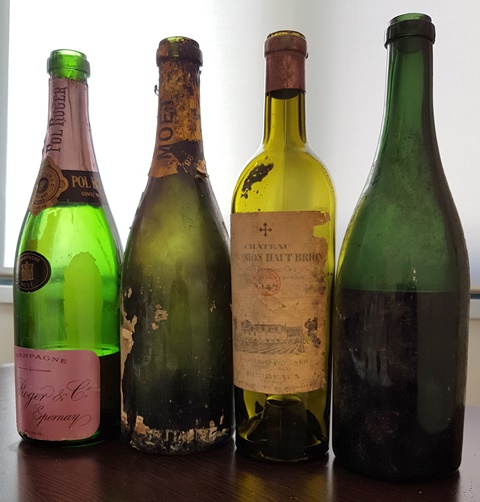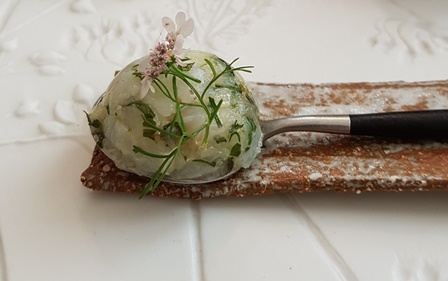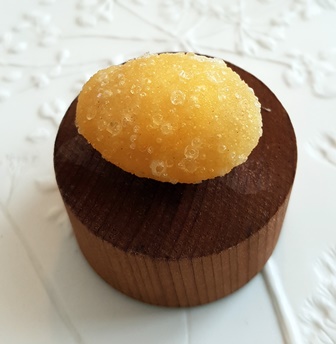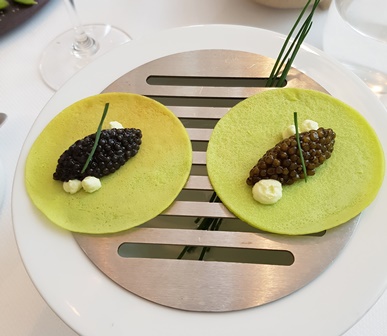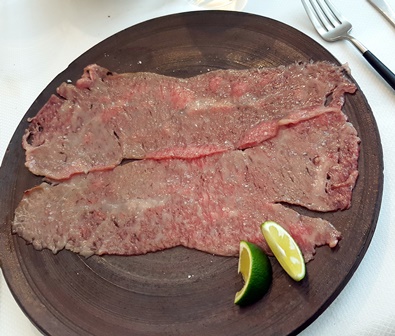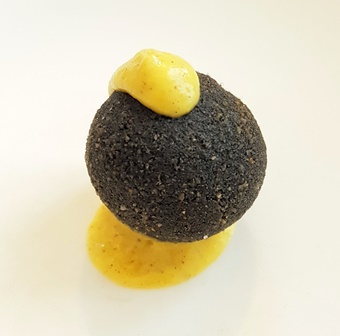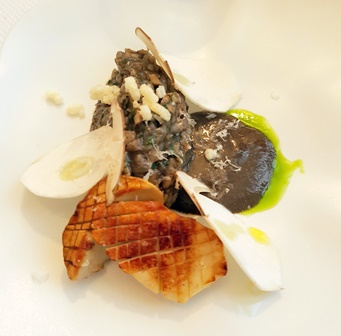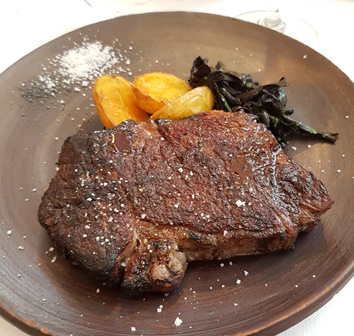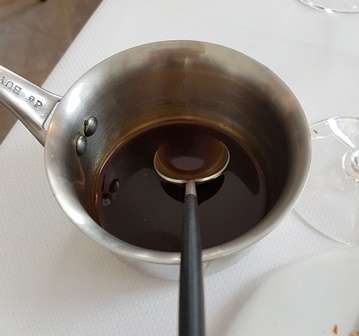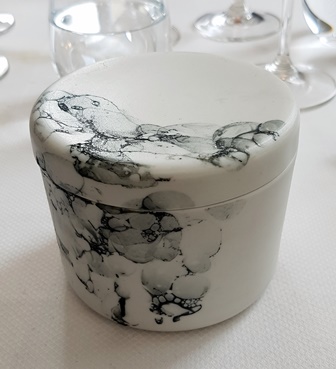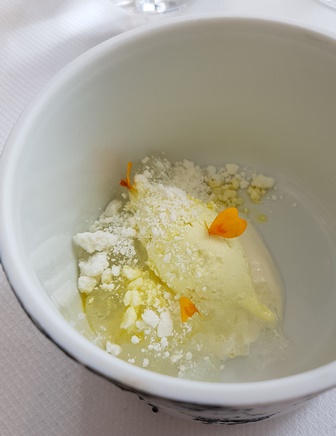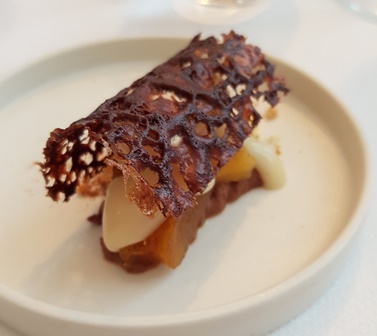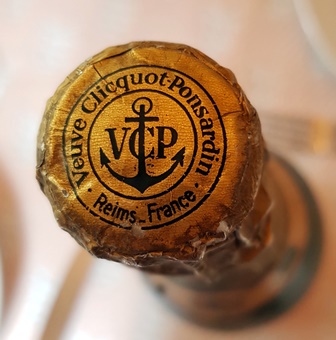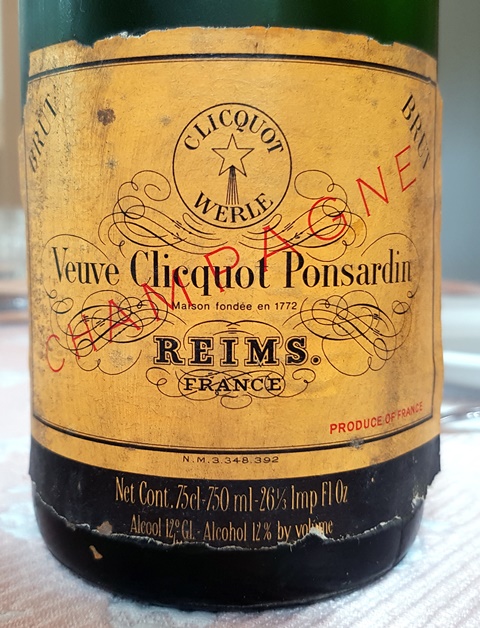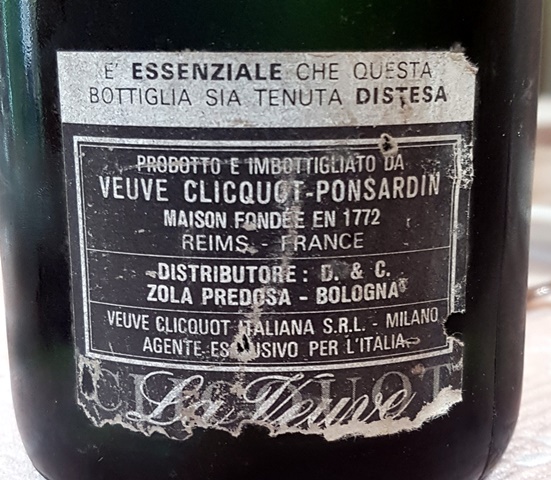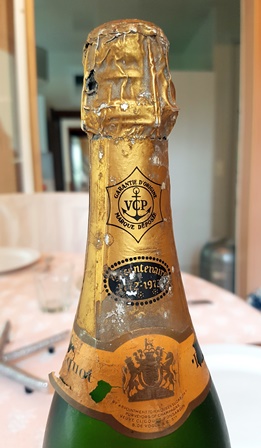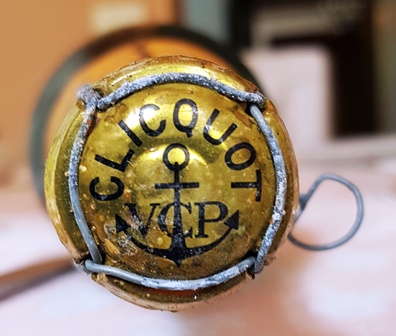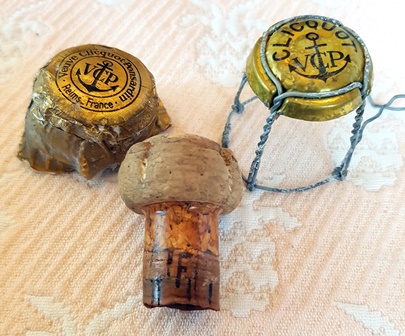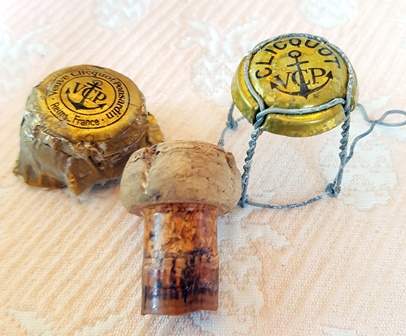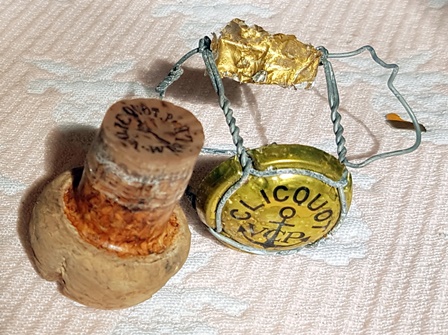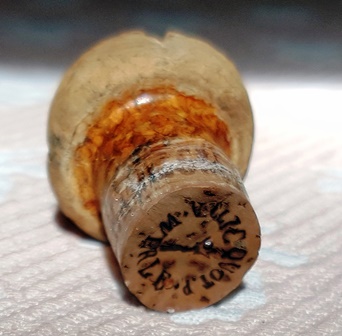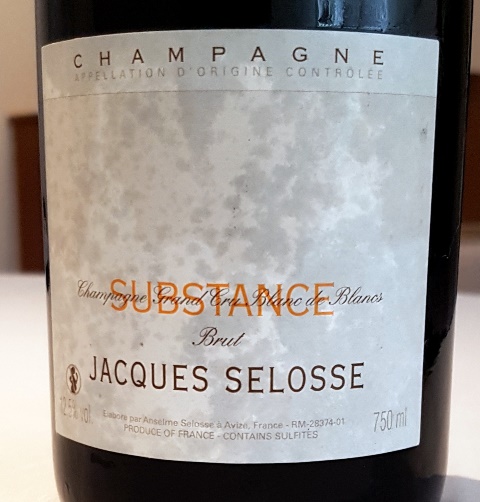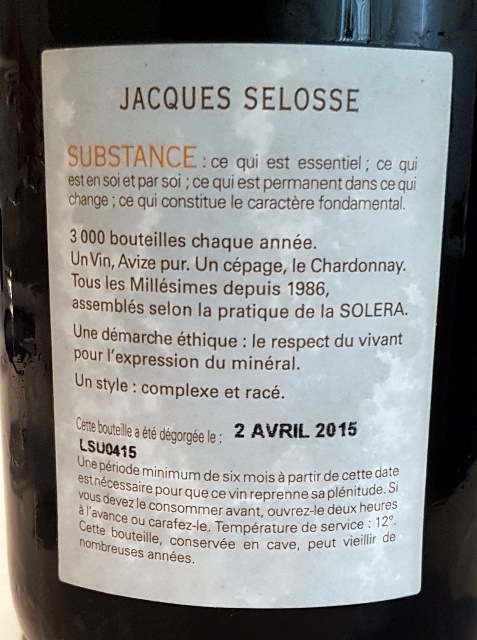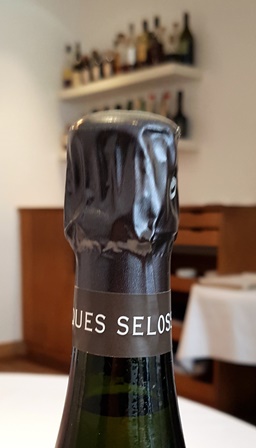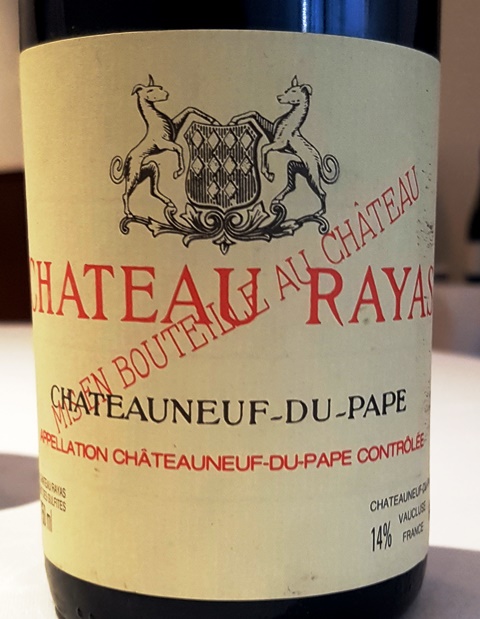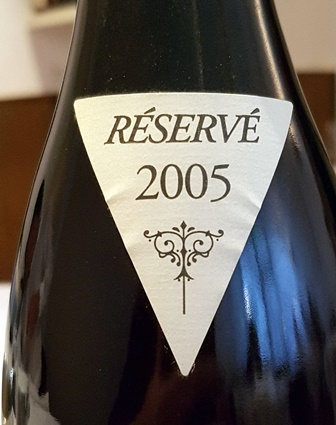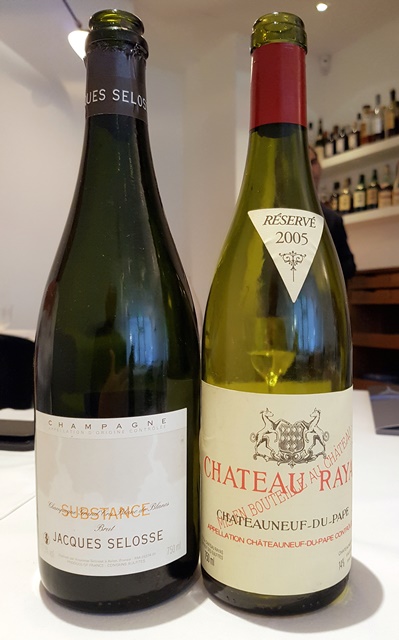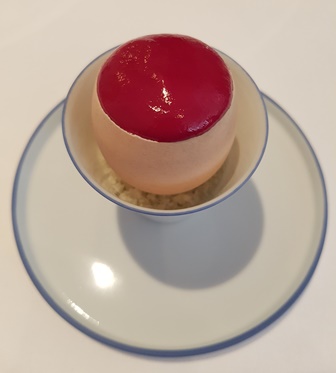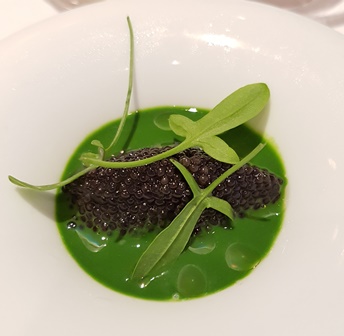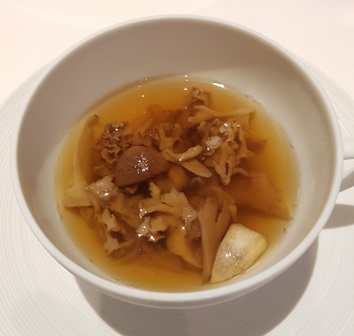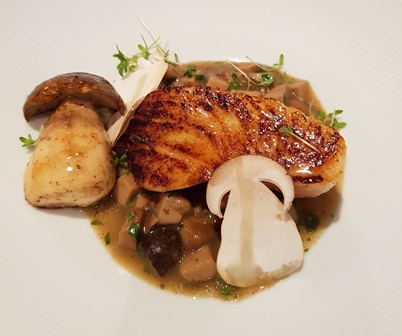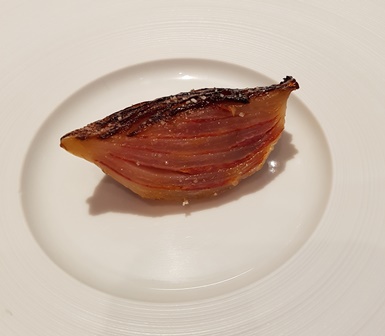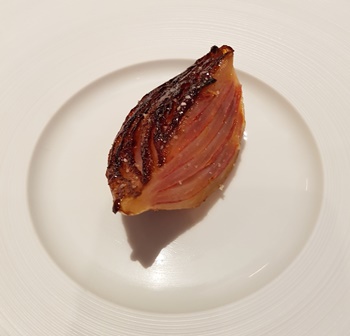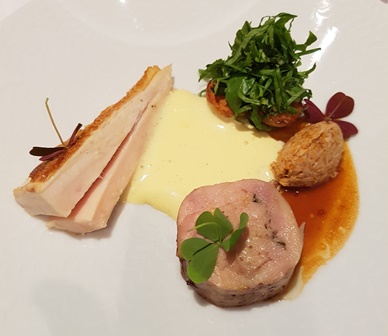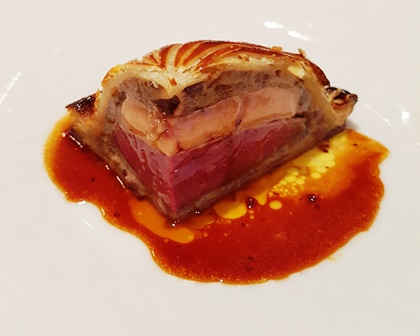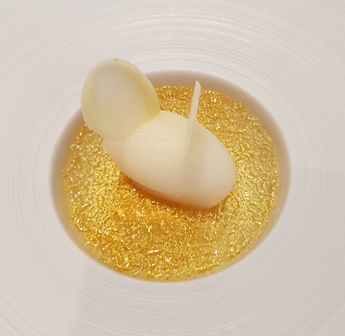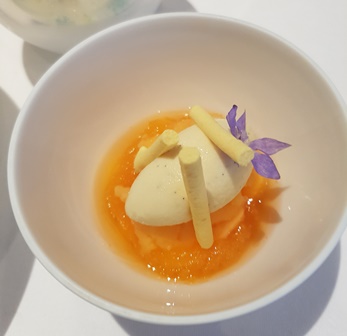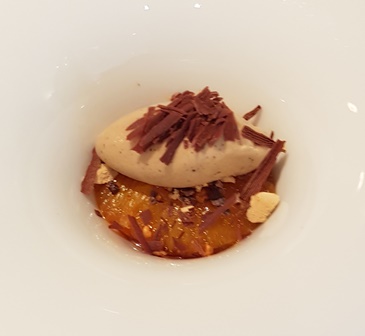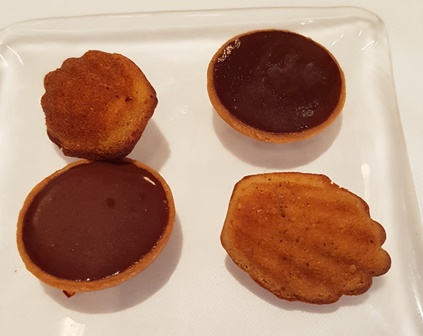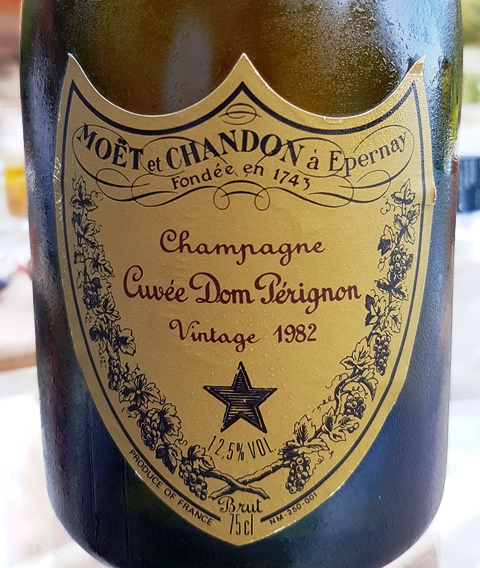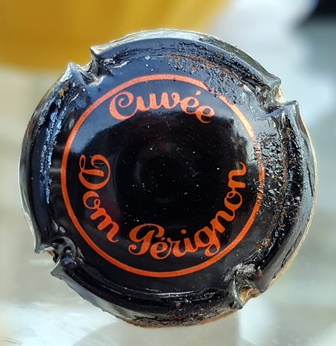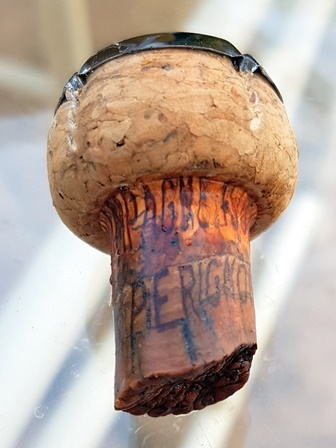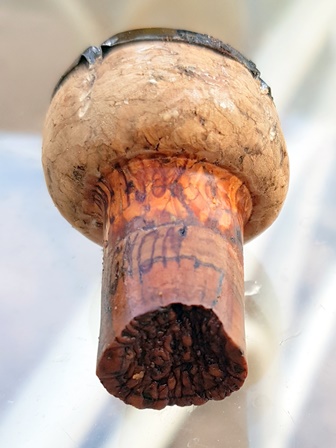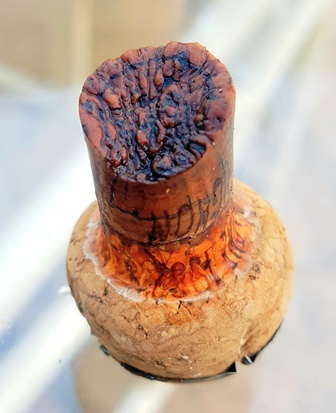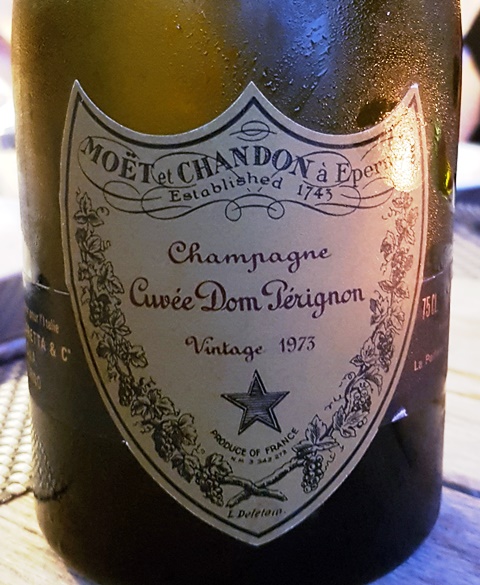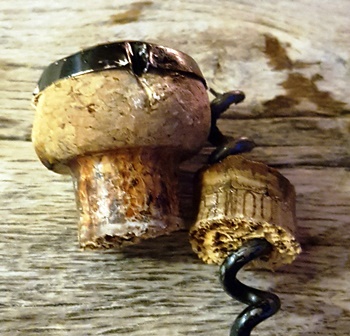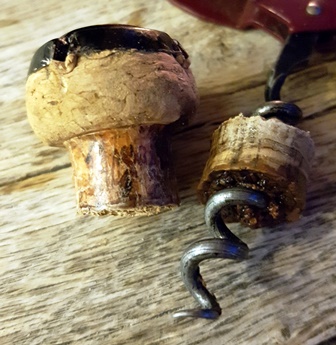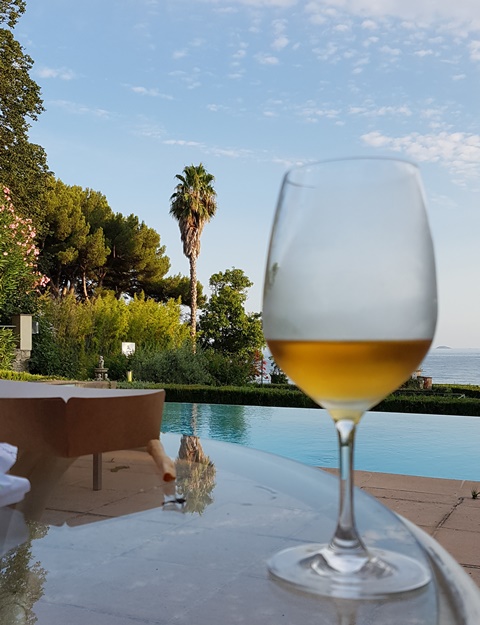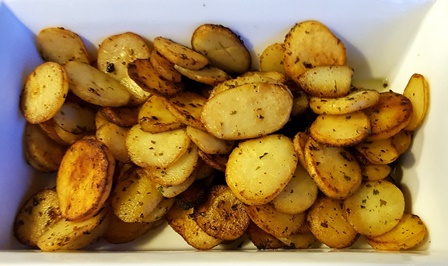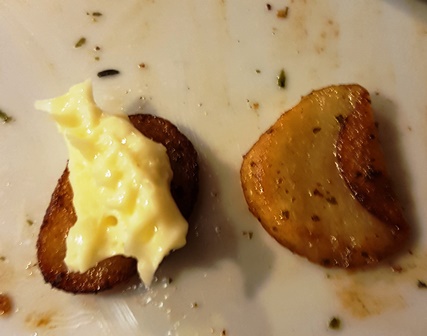We go with Sarah to the restaurant La Vague d’Or located in the Residence La Pinède which serves as a jewel case for it. We arrive soon enough under the daylight to see the bay of Saint-Tropez invaded by boats, everyone being larger than the others. We can imagine all the countries where these boats are registered for reasons that have nothing to do with geography. During the aperitif, the sunset behind the hills will offer splendid intense pink colors.
Our aperitif table is directly above the small pool where young children frolic and one of the waiters consciously sweeps the splash. The wine list of champagnes is vast and includes many champagnes of the group Moët Hennessy since the Pinède belongs to the LVMH group of Bernard Arnault. But the pricing of the champagnes of the group is a « kill-love », absolutely dissuasive. I ask Maxime, the competent sommelier, which is the year of disgorgement of the champagne Initial de Selosse and he looks at me with a smile because I asked the same question two months ago at a dinner in this place.
My choice is on the Champagne Charles Heidsieck Blanc des Millénaires 1995. It is a champagne of beautiful structure, with a marked acidity that will fade as soon as the champagne is in contact with the nice presentations to nibble. Thus, immediately with the delicious oyster, the champagne flourishes, lively and alive. If it has much in common with the champagne Salon 1999 that we drank recently, it is missing this little supplement of soul that makes the very big champagne. Having the still alive memory of the sublime Blanc des Millénaires 1985, I rank this 1995 after him. He will however be a very pleasant companion of half the meal that is reserved for him. After the beautifully worked oyster we taste very nice olive preparations, a leaf prepared as in tempura and a great delicacy, a complex cream made of tomato and a masterly preparation with snail base that could also cohabit with a red wine.
We will not take a tasting menu and we orient the excellent director Thierry di Tullio towards dishes for champagne and then for a red wine. Thierry who can not deny his Italian roots is a poet when he describes the dishes. We eat them just by listening to his statements. Sarah and I take the same dishes, my wife taking other orientations since she does not drink.
The menu is for drinkers: The gambons (prawns) just quickly panned, drop violin zucchini flower, chanterelles and almonds identified thyme flowers, flanked by a cold soup confidentiality vinegar. The heads take fingertip / The rabbit and absinthe with bacon, fennel, stalks and bulbs in three textures, plum tomatoes mid confit with star anise, black olives macerated with aniseed, spicy stew juices way in the vinegar of Nebbiolo.
As with champagnes, the wine list is a deterrent to anything that comes from the LVMH group. Cheval Blanc is inaccessible as well as most Yquem. Even the Chinese wine Ao Yun of the group is priced in « off-piste ». In agreement with Sarah I choose a Gaja Sperss Langhe 2011 one of the biggest Italian Barolos made of 95% Nebbiolo. It is in writing this account that I realize the pure chance that wanted the vinegar of the dish also of Nebbiolo. Is that the reason for the combination?
The prawns treated by the chef Arnaud Donckele are of a flesh tasty of a refinement that I never knew of this crustacean. When I visit the chef at the end of the meal in his kitchen we will have a discussion on a point of detail. For my taste the cold velvety cream prevents the flesh of the prawns to express itself in all its purity, while for Arnaud it is inconceivable to make a dish without sauce. Arnaud is the man of sauces. If he is the man of sauces it is also that of farces, for the farce of prawns that one eats in the shell of the head is a marvel. The two-course dish is gourmet and refined and the Champagne Blanc des Millénaires accompanies it well with a nice length and a slight lack of width but which one forgets easily. The accompaniments of mushrooms and flowers are of an absolute refinement.
Before the next dish we have a sorbet which serves as a « Norman hole ». You must eat bread to recalibrate the palate and pretend to taste the wine.
There would be no room for any criticism for the wonderful rabbit dish. Everything in it is finesse, gluttony and coherence. It is a perfect dish. I asked Maxime that the wine be opened at the last moment and not decanted because I want to follow its evolution and expansion. This wine is noble, refined, combining controlled power and delicacy. It is fruity, but it is its nobility and its class that are catchy. It behaves ideally with the dish and as it remains I take cheeses on which the tuning is possible but without the vibration that gave the rabbit.
Sarah taking a dessert I accompanied her with a thin tart with eight citrus fruits and meringue puffed, « winter harvest and now », juicy endocarp sprouts, citrus pepper mint citrus chiselled, a lemonade of a Return trip to the Middle East. The incredible complexity of this dessert is as long as the title of the dessert. I am delighted, because in this myriad of tastes everything is coherent. I rarely ate a dessert as pleasant and greedy in its freshness.
It was getting late and Arnaud Donckele will only appear to chat if the number of tables decreases which is not the case as the atmosphere is so pleasant on this sweet night, so I will greet him in the kitchen which is huge . He follows me to greet my wife and Sarah and I pour a glass of Gaja Sperss that he appreciates.
What about this dinner? Thierry di Tullio is a poet who enchants you by his fashions, Aurore has done a table service of great quality. Maxime is a sommelier with rare skill. The cuisine of Arnaud Donckele combines exceptional qualities because the complexities he likes to explore are part of a gourmet and readable approach. The rabbit and the dessert are models. When you see the number of boats in the bay of Saint-Tropez we can say that this restaurant does not need to lower the prices of wines, because there will always be customers who do not look at prices.
On a calm and soothing night, in a joyful atmosphere, we had a dinner of very high quality.

